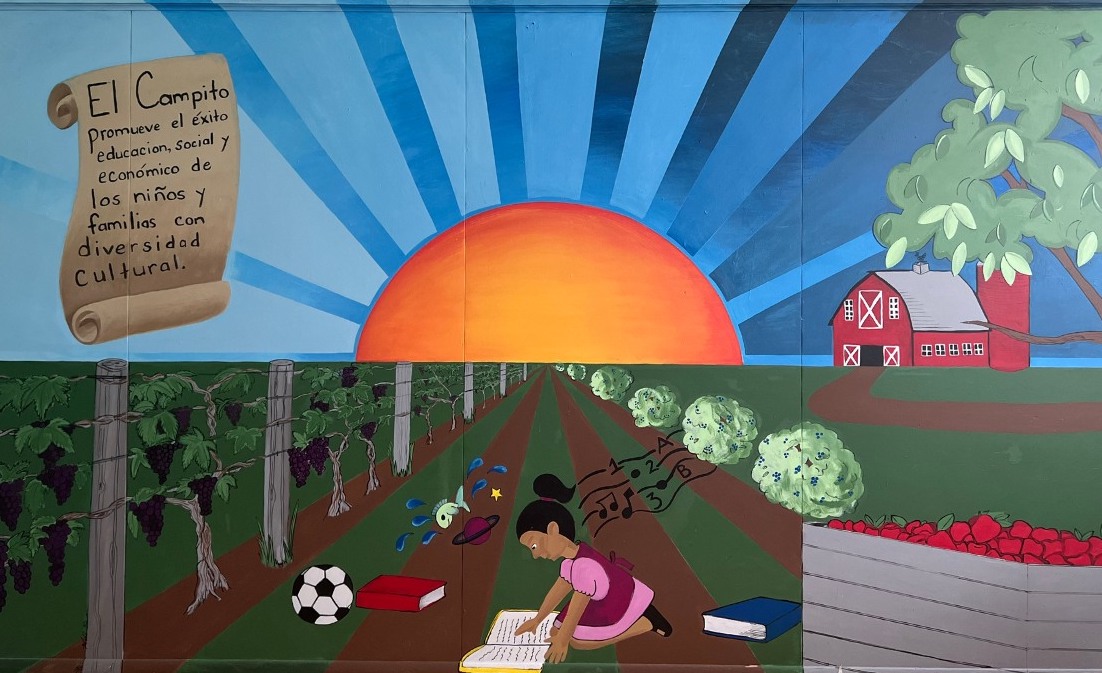What’s Old is New
She sounds almost apocryphal: Concepcion Niño. A woman whose last name means “child” co-founded a childcare center in South Bend, Indiana, to care for the children of farm workers.
As a migrant worker, she had seen small children brought to the agricultural fields in Texas by parents who lacked childcare, and in South Bend she wanted to ensure that didn’t happen. So in 1970 she and her husband, Ignacio, along with some friends, started a childcare center in her home and named it “little field”—El Campito.
Fifty years later, field and little field reunited when El Campito Child Development Center partnered with the Near Westside Neighborhood Organization to turn a vacant lot at the corner of Thomas and Laurel streets into an educational and communal garden. The center’s teachers and staff asked that the garden be named after their founder. It would be a place where people and plants can grow together.
Today, Mrs. Niño’s Garden grows on almost an acre of land across the street from the campus of the Studebaker National Museum and the History Museum. From its founding, the garden set out to grow foods that celebrate the cultures of the communities at El Campito and in the westside neighborhood. The children often choose to plant things that they can put on tacos, like cilantro and jalapeño peppers. Among the most popular crops available for anyone to harvest are okra, tomatoes and collards, foods prevalent in southern and African-American cultures.
The children in El Campito’s after-school program played a big role in choosing the crops: During spring break programming they cut up seed catalogues and pasted together “crop plans.” Their choices skewed heavily to colorful varieties, like red flowers and purple tomatoes and tomatillos.
It was a 6-year-old’s enthusiasm for a picture of “rainbow corn” that set the stage for the garden’s signature crop of glass gem, zea mays, a vibrant, multi-colored corn bred from numerous varieties of the plant native to central America and central to human history. The corn grows in mounds, in the indigenous “three sisters” method, interplanted with climbing beans and squash. Garden neighbors value the corn leaves, never sprayed with chemicals, for wrapping tamales.
The transformation from vacant lot to working landscape has progressed quickly over five years. In the first season, spring 2020, in the middle of lockdown, just getting seeds in the ground felt healing as it provided a way for people to gather out of doors. In the second season, community funds supported the installation of a fence and irrigation, projects designed and implemented by a University of Notre Dame civil engineering class. Soon the fence was ringed (thanks to a grant from the Indiana Native Plant Society) with herbaceous plants native to the region, including coreopsis lanceolata, dalea purpurea, liatris aspera, solidago speciosa and parthenium integrifolium, plants that offer something to pollinators and attract predator insects that eat the insects that eat the vegetables growing nearby. In half of the lot where broken asphalt was pulled out, a meadow has begun to grow, coaxed along to add biomass to the gravel substrate left behind—and to offer winding paths for children’s exploration, observation and play.
Meanwhile, programming expanded dramatically. In 2022, through a partnership with Northern Indiana’s Regional Migrant Education program, funded by a grant from the Sustainable Agriculture Research and Education program, high school students learned about sustainable food systems while being paid to serve as farm camp counselors for the school-age children at El Campito. The children began spending more time in the garden. The high school students visited other models for educational farms, including Good Shepherd Montessori, in South Bend, and Granor Farm, in Three Oaks, Michigan. A garden was coming into being, and students of all ages were helping to imagine what Mrs. Niño’s Garden might grow into.
But a vacant lot, of course, is never a void. Where children now play in the garden, children have played before. The field has been different kinds of fields. Mrs. Niño’s Garden grows on the traditional land of the Potawatomi and Miami peoples. On the east side of the field, in the 1870s, the young city of South Bend built one of its first public schools, named the Laurel School, after a Laurel tree that stood on the corner.
A woman from South Bend, writing in Sports Illustrated in 1959, remembered that school as a place where children never went, “a scowling, dark brick building set in a grassless, dusty play yard.” Around 1914, her life as a child changed when a new playground was built. Along with new fields for play came athletic equipment, swings and a sandbox. But it was the playground’s director—Notre Dame’s assistant football coach Knute Rockne—who, she wrote, “made this the most important summer of our lives.” He came often and supervised their play; soon they were organized into teams. After he saw them practicing Scottish highland dance from a textbook in the school’s basement, Rockne showed up one day with a Scotsman wearing a kilt and carrying a bagpipe. He joined in, and everyone danced in the basement that once stood in the ground where mounds of rainbow-colored corn now grow.
The Laurel School was torn down in 1979. The field where community gathered, children played and a famous football coach inspired lay fallow for 40 years—until, in a pandemic spring, the memory of a remarkable woman named Concepcion Niño inspired new growth in the fertile ground that remained.
For more information, follow mrsninosgarden on Facebook.
Andrea Crawford is a writer living in South Bend, Indiana.







